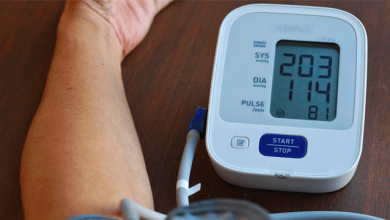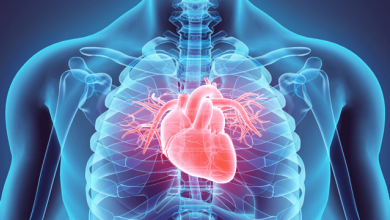Search results
Author(s):
Carsten Schwenke
,
Monica Boos
,
Rainer Hentrich
,
et al
Added:
3 years ago
Since its introduction in 1993,1 contrast-enhanced magnetic resonance angiography (ce-MRA) has been considered the technique of choice for angiographic examination of most regions of the body. This is because of several technical and clinical advantages in comparison with non-contrast-enhanced MRA (nce-MRA) imaging. In this article, we focus on patients with suspected peripheral arterial…
View more
Author(s):
Sebastian Kelle
,
Eike Nagel
Added:
3 years ago
Magnetic resonance imaging (MRI) is a powerful imaging modality for diagnostic cardiology and research. This imaging method provides combined diagnostic information of different tissue characteristics, such as the visualisation of the vascular tree and cardiac anatomy and function, as well as measurements of blood flow in the vessels, ventricular wall motion, myocardial perfusion and viability…
View more
Home Blood Pressure Monitoring
Author(s):
Jacob George
,
Thomas M MacDonald
Added:
3 years ago
Article
Author(s):
Covadonga Fernández-Golfín
,
Jose Luis Zamorano
Added:
3 years ago
Since the introduction in the early 1980s of magnetic resonance imaging (MRI) in clinical practice, contrast agents (CAs) have been part of MR studies enhancing the capabilities of this diagnostic technique. CAs enhance the contrast between different types of tissues. Tissue contrast depends largely on proton concentration and longitudinal (T1) and transversal (T2) relaxation times inherent to…
View more
Lantheus Medical Imaging
Supplier
Author(s):
Andrea Aparicio
,
Javier Cuevas
,
César Morís
,
et al
Added:
2 years ago
Author(s):
Tim Leiner
Added:
3 years ago
In recent years, magnetic resonance angiography (MRA) of the peripheral vascular tree has evolved into a widely available and valuable technique in the diagnostic and pre-interventional work-up of patients with peripheral arterial disease. Numerous studies have demonstrated the diagnostic accuracy of MRA for the assessment of abdominal and peripheral arteries, and in many hospitals the technique…
View more
Author(s):
Markus P Schlaich
,
Murray D Esler
Added:
3 years ago
The pathogenesis of primary hypertension is multifactorial. However, the sympathetic nervous system plays an important role in circulatory and metabolic control and has clearly been established as a major contributor to the development of hypertension, with blood pressure elevation being initiated and sustained by elevated sympathetic nervous activity. Increased sympathetic outflow to the heart…
View more
Author(s):
Zengwu Wang
,
Tom Richart
,
Yu Jin
,
et al
Added:
3 years ago
Stroke is the second most common cause of mortality worldwide.1 Cerebrovascular disease caused an estimated 5.7 million deaths in 2005, with 87% occurring in low- or middle-income countries.2 Without intervention, the global number of stroke deaths will rise to 6.5 million in 2015 and 7.8 million in 2030.2 Blood pressure is the most consistent and powerful predictor of stroke. Hypertension…
View more
Author(s):
Valentina O Puntmann
,
Silvia Valbuena-López
Added:
1 year ago













